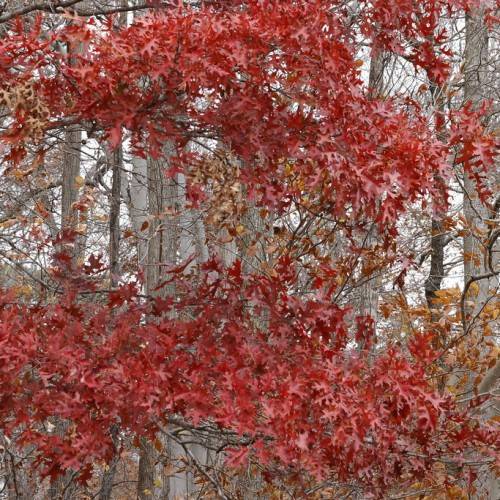
scarlet oak
Quercus coccinea
Cycle:
Perennial
Watering:
Minimum
Hardiness Zone:
4 - 9
Flowers:
Flowers
Sun:
Full sun
Soil:
Acidic, Humus rich, Well-drained
Fruits:
Fruits In Autumn Ready In
Leaf:
Yes
Growth Rate:
High
Maintenance:
Low
Thorny:
Yes
watering
Scarlet oak is a native species and prefers moist soils. It should be watered once a week, and around 7-10 gallons of water should be applied each time. During the hottest part of the summer, it may require more frequent watering, but make sure that the soil is still slightly moist before applying additional water. During the winter months, it may not need to be watered as often, as long as the soil doesn't become thoroughly dry.
sunlight
Scarlet Oaks (Quercus coccinea) prefer full sunlight for the best growth. Ideally, they should receive direct sunlight for 6 to 8 hours every day during the warmer months in order to thrive. However, they can tolerate some light shade, particularly during the peak hours of the day when the sun is at its strongest. However, too much shade can lead to stunted growth and the oak trees won't reach their full potential.
pruning
Scarlet oak trees (Quercus coccinea) should be pruned in late winter or early spring, before new growth begins. Prune dead, diseased, or damaged branches any time of the year. When pruning, make sure to leave enough of the branch to protect the tree from insect damage and sunscald. Make sure to only remove smaller branches when possible to avoid large crown reductions. If needed, decrease size and shape of the tree gradually to minimize stress to the tree. Finally, prune so that more sunlight can reach the inside of the tree and remove any branches crossing over 1 another.
